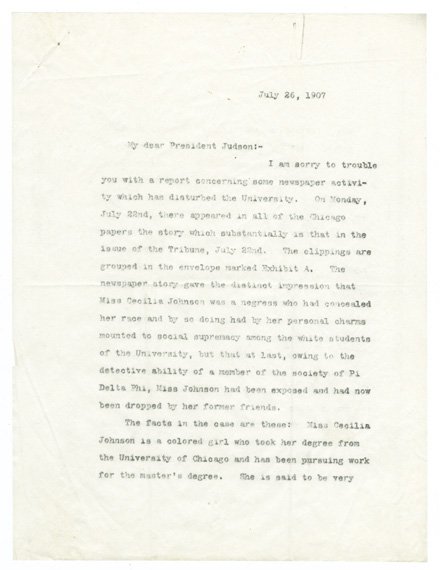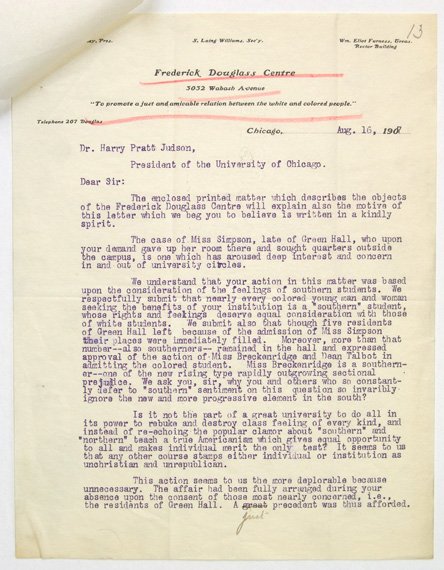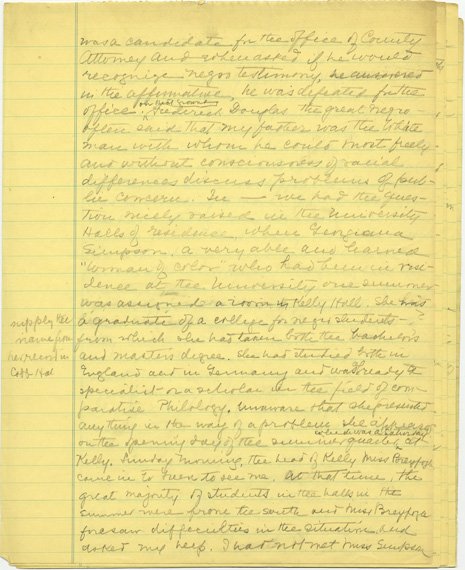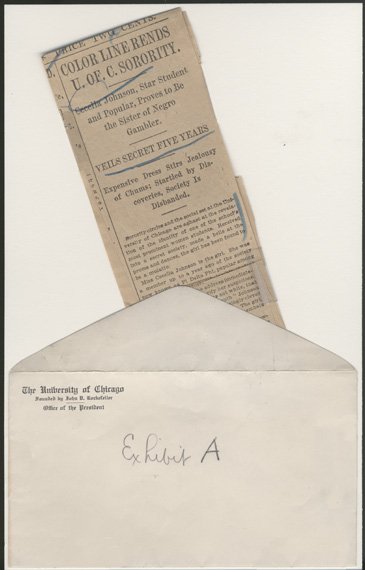The Social Question - Round One
The title of this exhibit, "Integrating the Life of the Mind," reflects the fact that African American students at the University of Chicago between 1870 and 1940 were integrated into the intellectual but not the social life of the institution.
As the University of Chicago moved forward as an institution integrated in intellectual pursuits, it repeatedly hit rocky waters when social questions emerged. The first controversies arose in 1907 through two separate but similar events.
In July of 1907, an African American alumna and graduate student, Miss Cecilia Johnson, was (it appears falsely) accused of having tried to pass for white in order to join a sorority. She was "out-ed" by a fellow student who worked surreptitiously as a stringer for the Chicago Tribune.
Miss Johnson left the University on account of the scandal and did not immediately return, despite a letter from Dean of Graduate Study and Acting-President Albion Small, condemning the episode of intolerance. She did, however, complete her Masters in education in 1920.
Later that summer, a second controversy arose. An African American student from Washington D.C., Georgiana Simpson, had enrolled for a BA degree. She had elected to live in Green Hall, a women's dormitory, but her arrival occasioned protests from several white Southern women students.
Sophonisba Breckenridge, Head of Green Residence Hall and Secretary to Marion Talbot, Dean of Women, made an executive decision that Miss Simpson could stay in the dorms. In response, five of the protesting students moved from the dormitory. Upon his return from summer vacation, President Harry Pratt Judson reversed this decision and asked Miss Simpson to find residence off campus, which she did. This established an informal policy that African American students could not live on campus.
Secretary Breckenridge, Dean Talbot, and Dean Small were, like Dean Booth, activist administrators who chose to try to advance the cause of integration, in this case social as well as intellectual. In 1907 they failed in their efforts. In 1923 with a new president, they would get a second chance (see Social Question - Round Two section).

Typewritten letter, July 26, 1907
University of Chicago. Office of the President. Harper, Judson and Burton Administrations
Dean Small's letter, with the accompanying "Exhibit A" containing the relevant newspaper clipping, explains the harm done by newspaper articles about African American graduate student Cecelia Johnson, who was accused of having tried to pass as white to enter a sorority.

Typewritten letter, August 16, 1907 and August 29, 1907
University of Chicago. Office of the President. Harper, Judson and Burton Administrations
The topic of the correspondence is the forced relocation of Georgiana Simpson off-campus.

Manuscript, ca. 1919
Sophonisba Breckenridge Papers
Miss Breckrenridge would become an outspoken advocate for racial integration; her views would eventually, in the 1920s, prompt the formation of a University committee to give direct consideration to the topic of "housing Negroes."

